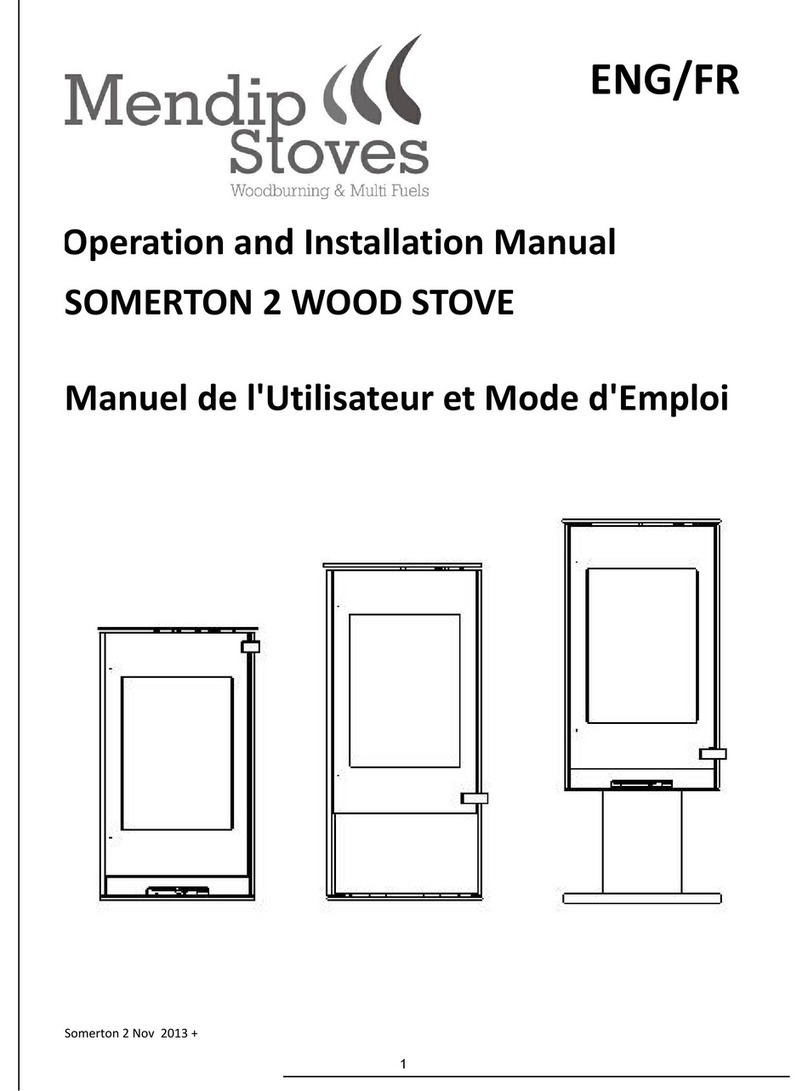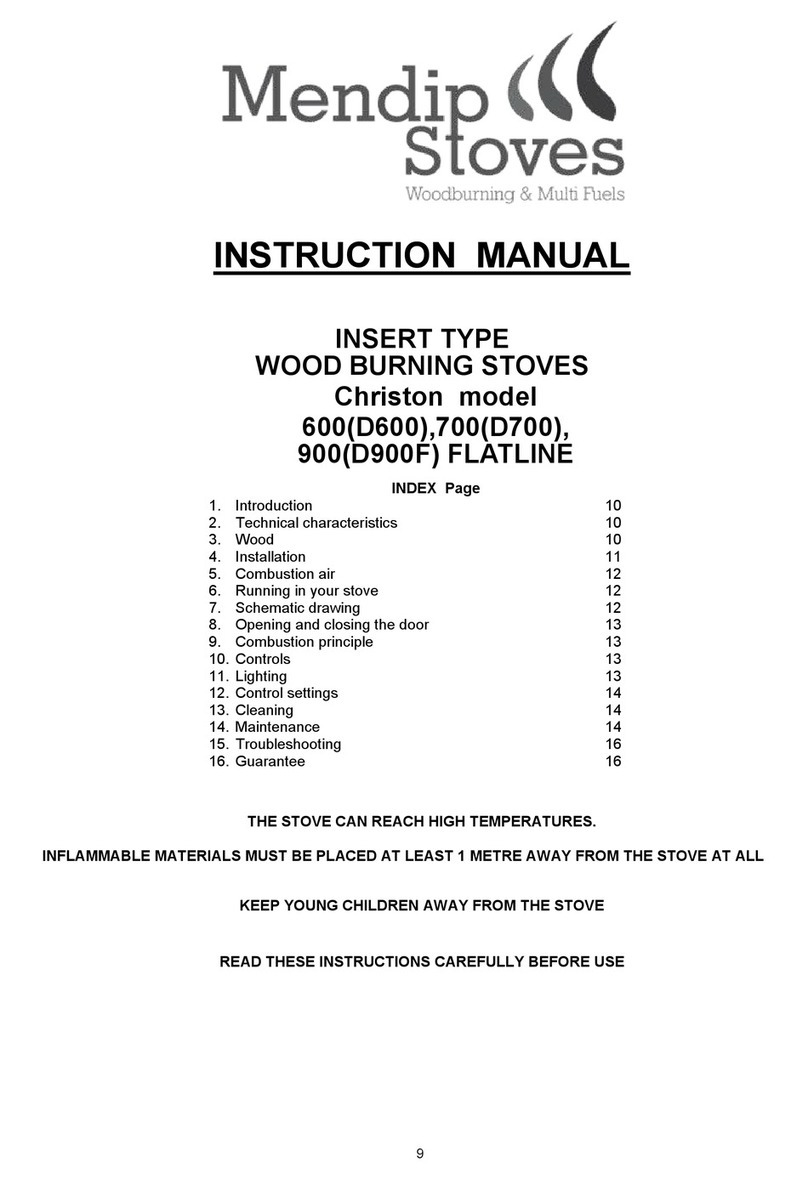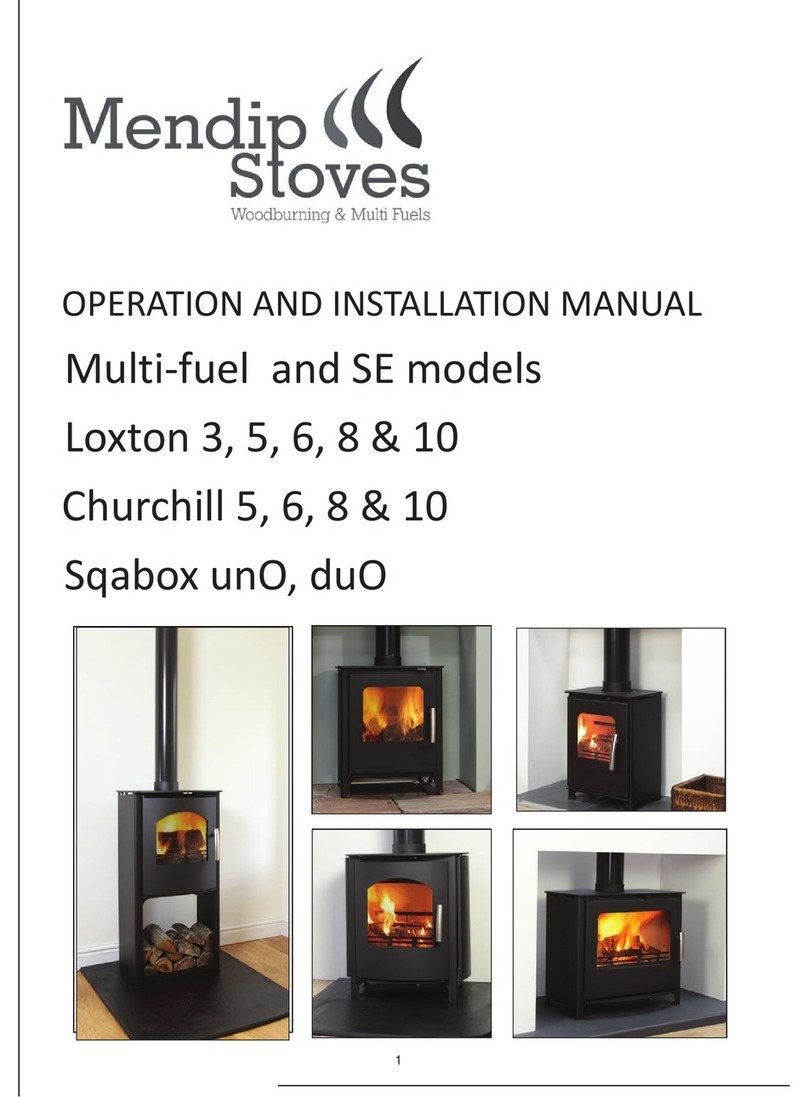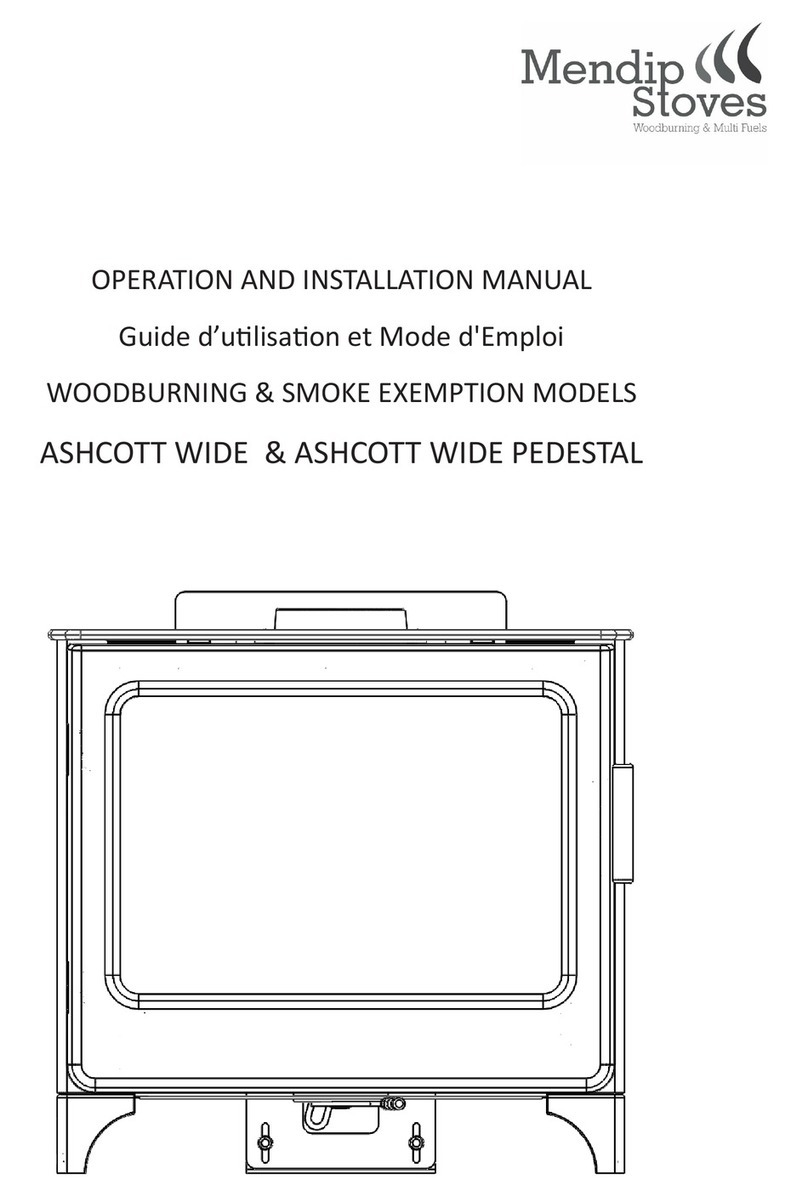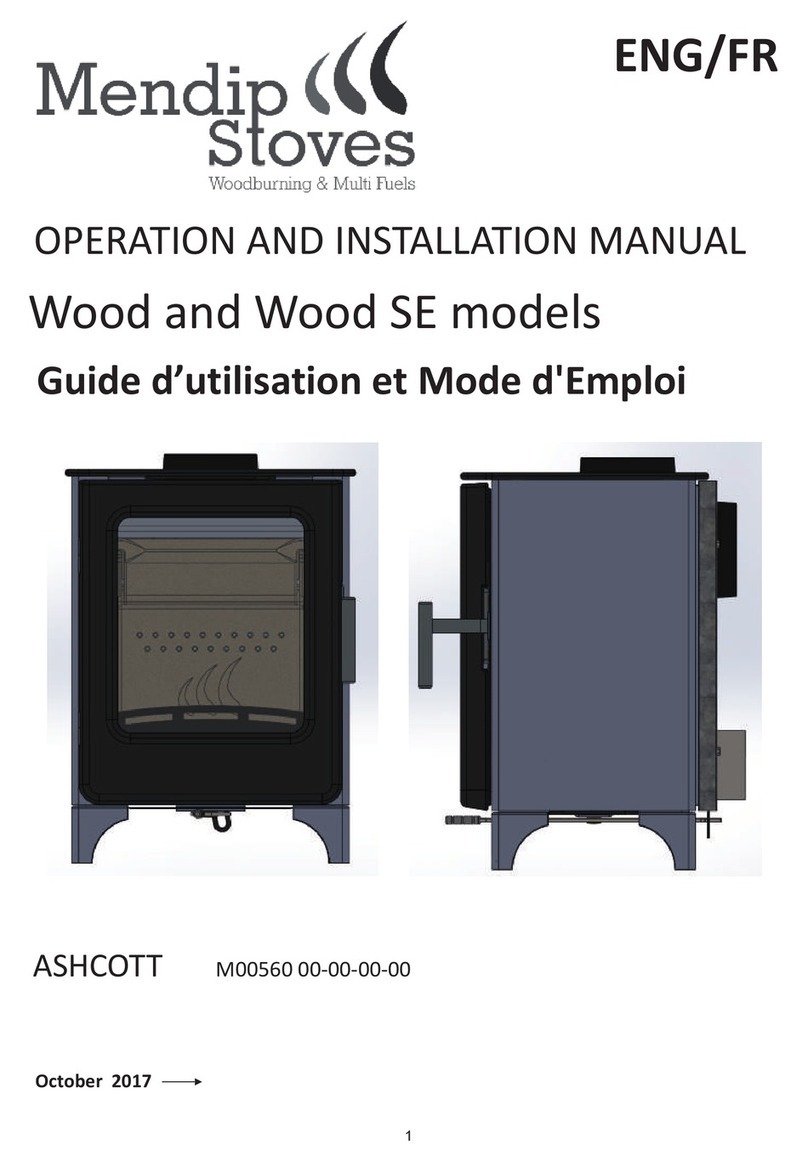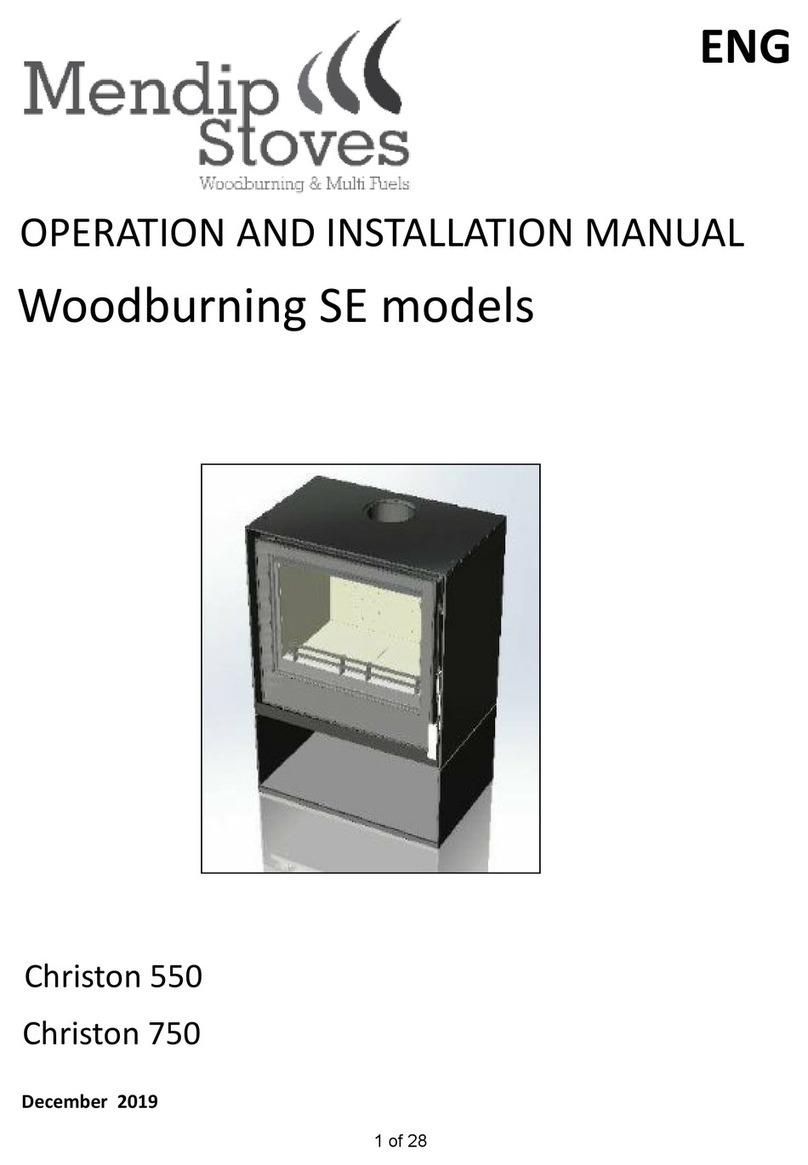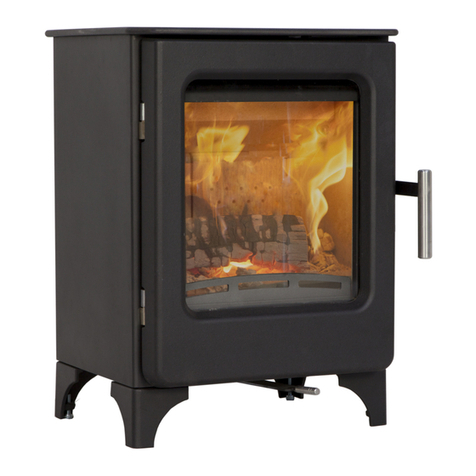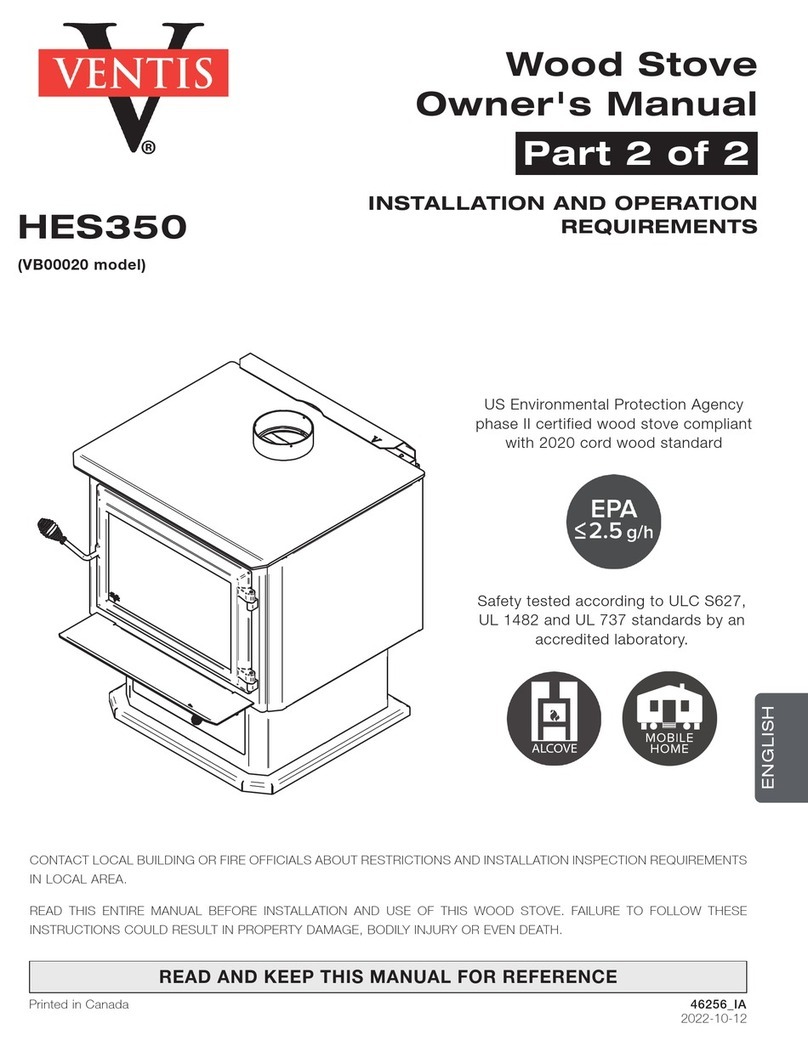
1. INTRODUCTION
Thank you for buying a Mendip Inset stove. To get the best ecological performance and highest output from
this
appliance please follow these installation and operating instructions. The guarantee will cease to apply if the
stove is
damaged as a result of a failure to follow the installation and operating instructions. The appliance must
not be
modified without the manufacturer’s written permission. Only original spare parts made by the manufacturer
should be
used to repair this appliance. Prevailing laws and local architectural and fire prevention regulations must be followed.
2. TECHNICAL CHARACTERISTICS:
Model D600 D700 D800 D800F D900F
Nominal capacity kW 7 9 11 11 11
Capacity Limits kW 4 - 9 5 - 11 6 - 13 6 - 13 6 - 13
Output under nominal capacity % 71 71 71 71 71
Flue gas temperature under nominal
capacity °C 365 365 365 365 365
Flue draught under nominal capacity Pa 12 12 12 12 12
Average CO2 at 13% O2 at nominal power Vol.
%9.74 9.74 9.74 9.74 9.74
Average CO at 13% O2 at nominal power Vol.
%0.256 0.256 0.256 0.256 0.256
Air consumption under nominal capacity m³/h 34 39 47 43 43
Safety distance from front cm 100 100 100 100 100
Stove dimensions:
Height mm 530 600 670 550 550
Width mm 600 700 800 800 900
Depth mm 410 430 450 450 450
Dimensions of the opening in the wall:
Height mm 540 610 680 560 560
Width mm 620 720 820 820 920
Depth mm 430 450 470 470 470
Weight of insert stove kg 81 101 116 108 120
Fuel wood wood wood wood wood
Consumption under nominal capacity kg 2.5 2.9 3.7 3.7 3.7
Consumption under maximum capacity kg 3.3 3.5 4.0 4.0 4.0
Maximum fuel moisture % 20 20 20 20 20
Maximum length of log cm 40 50 60 60 60
3. WOOD
The stove burns only wood. The best results are obtained using dry wood. Logs cut to size, stored and ventilated
under- cover for at least one year and preferably two, are best as they:A stove full of wood will generate more heat
over a longer period of time. Logs should not be too large and, generally speaking, the harder the wood the better.
Never use waste, chippings, wood shavings and sawdust, tree bark or waste from chipboard, laminated wood or
surface-treated wood. Do not cut the firewood too small. Very thin pieces of wood burn very quickly and are only
suitable for lighting the stove. Allow large pieces with the normal dimension of about 25cm to burn naturally. Large
logs must be chopped small.
Note: The stove is not a waste incinerator. The environment legislation expressly forbids the burning of
waste in household fires. Not only is it environmentally unfriendly to use a solid fuel stove incorrectly to
burn household waste, chemically treated wood waste or waste paper, or to use it as a private waste
incineration plant, but it is also in breach of the emission laws and liable to punishment. The appliance is
not suitable for burning liquid fuels. Besides creating high and unchecked air pollution, harmful combustion
products and combustion residues it also has a negative effect on the working and operating life of the
stove and flue. This results in all kinds of defects and rapid wear, which may require expensive repair and
even replacement of the stove. The burning of unsuitable fuels can lead to a house fire of a type not
covered by your fire insurance.
•Produce considerably more heat than wet or green wood.
•Produce much less smoke and deposit less tar on the stove, chimney and glass panel than wet or green wood.
•Only dry wood prevents emissions of hazardous substances when burning.
